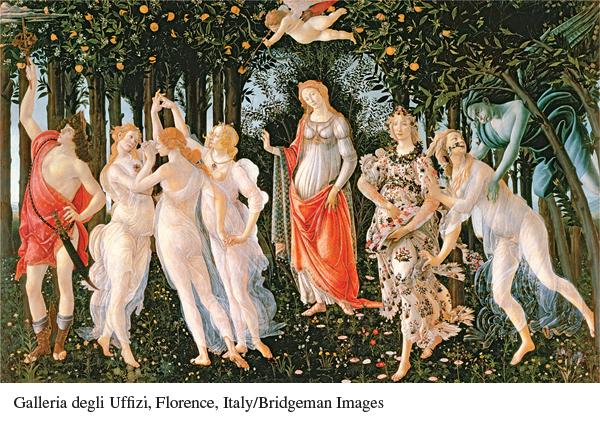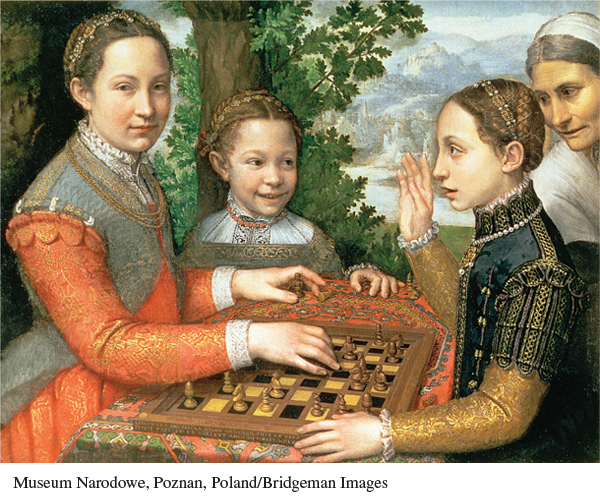A History of Western Society: Printed Page 375
A History of Western Society, Value Edition: Printed Page 360
A History of Western Society, Concise Edition: Printed Page 375
The Renaissance Artist
Some patrons rewarded certain artists very well, and some artists gained great public acclaim as, in Vasari’s words, “rare men of genius.” This adulation of the artist has led many historians to view the Renaissance as the beginning of the concept of the artist as having a special talent. In the Middle Ages people believed that only God created, albeit through individuals; the medieval conception recognized no particular value in artistic originality. Renaissance artists and humanists came to think that a work of art was the deliberate creation of a unique personality who transcended traditions, rules, and theories. A genius had a peculiar gift, which ordinary laws should not inhibit. Michelangelo and Leonardo da Vinci perhaps best embody the new concept of the Renaissance artist as genius. (See “Individuals in Society: Leonardo da Vinci.”)
It is important not to overemphasize the Renaissance notion of genius. As certain artists became popular and well known, they could assert their own artistic styles and pay less attention to the wishes of patrons, but even major artists like Raphael generally worked according to the patron’s specific guidelines. Whether in Italy or northern Europe, most Renaissance artists trained in the workshops of older artists; Botticelli, Raphael, Titian, and at times even Michelangelo were known for their large, well-

As Vasari’s phrase indicates, the notion of artistic genius that developed in the Renaissance was gendered. All the most famous and most prolific Renaissance artists were male. The types of art in which more women were active, such as textiles, needlework, and painting on porcelain, were regarded not as “major arts,” but only as “minor” or “decorative” arts. (The division between “major” and “minor” arts begun in the Renaissance continues to influence the way museums and collections are organized today.) Like painting, embroidery changed in the Renaissance to become more naturalistic, more visually complex, and more classical in its subject matter. Embroiderers were not trained to view their work as products of individual genius, however, so they rarely included their names on the works, and there is no way to discover their identities.
There are no female architects whose names are known and only one female sculptor, though several women did become well known as painters in their day. Stylistically, their works are different from one another, but their careers show many similarities. The majority of female painters were the daughters of painters or of minor noblemen with ties to artistic circles. Many were eldest daughters or came from families in which there were no sons, so their fathers took unusual interest in their careers. Many women painters began their careers before they were twenty and either produced far fewer paintings after they married or stopped painting entirely. Women were not allowed to study the male nude, a study that was viewed as essential if one wanted to paint large history or biblical paintings with many figures. Women also could not learn the technique of fresco, in which colors are applied directly to wet plaster walls, because such work had to be done in public, which was judged inappropriate for women. Joining a group of male artists for informal practice was also seen as improper, so women had no access to the newly established artistic academies. Like universities, humanist academies, and most craft guild shops, artistic workshops were male-

Women were not alone in being excluded from the institutions of Renaissance culture. Though a few rare men of genius such as Leonardo and Michelangelo emerged from artisanal backgrounds, most scholars and artists came from families with at least some money. The ideas of the highly educated humanists did not influence the lives of most people in cities and did not affect life in the villages at all. For rural people and for less well-